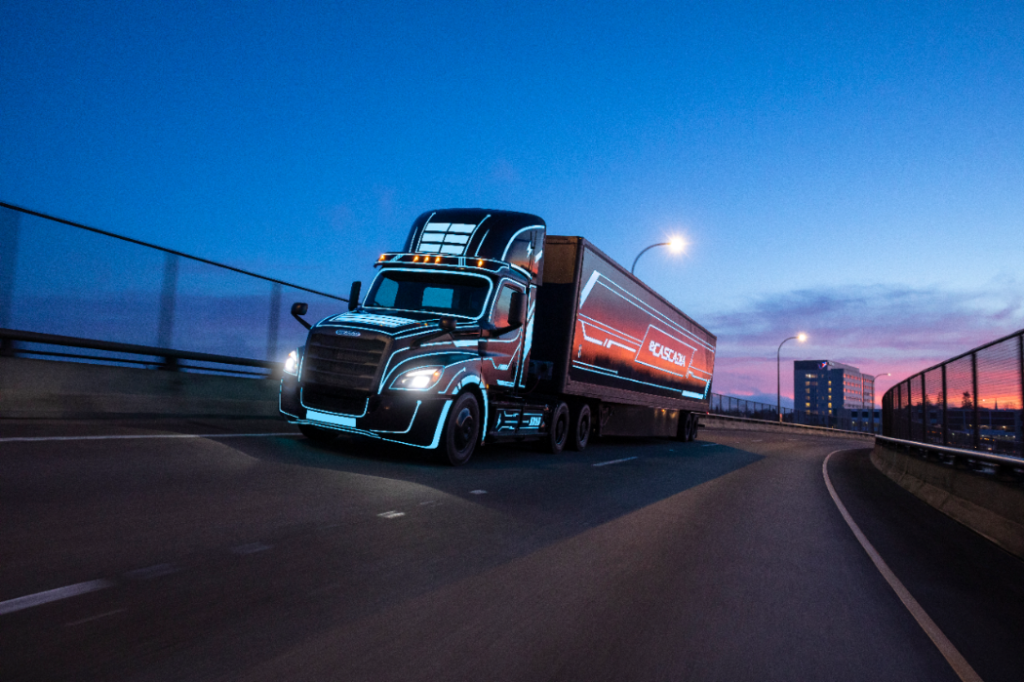Prepare for tomorrow’s technologies today: DTNA’s O’Leary
Connectivity, autonomy, and electrification are all monumental challenges in their own right, but today’s truck manufacturers are pursuing all three simultaneously.
That was the message John O’Leary, president and CEO of Daimler Trucks North America, gave as keynote speaker at the Technology & Maintenance Council’s spring meetings this week.
“Greater safety, reduced congestion, and – with both regulatory and consumer pressure – a drive toward decarbonization. Any one of these three goals by themselves represent a tremendous rethink of both our equipment design, as well as our manufacturing operations, and your service offerings,” O’Leary said.
“Any one of these three goals require technological innovations that, by themselves, would have historically taken decades to accomplish. Instead, we’re looking at doing all three at once, and against an aggressive timeline…all while the industry is tasked with keeping an ever-increasing number of trucks on the road.”

O’Leary said technological developments in these areas must be practical. “None of us want to see science projects on the road,” he said. But he also said he’s confident industry will deliver on these goals. On the connectivity front, the jump to 4G increases connection speeds by 14-15 times, O’Leary said.
“On top of that, 5G – when it comes – will increase that data pipeline by up to 100 times over 4G,” he added. He suggested the jump in connection speeds will allow the nation’s entire fleet to be connected.
“It also means that service operations will be better informed about what truck is coming in for service, why, and what parts are needed when that truck arrives,” O’Leary said. “Connectivity will better help you with responding to the customer’s needs and it will help all of us with getting drivers back out on the road faster.”
Meanwhile, automated driving technologies are also making trucks safer, O’Leary said, with features like lane keep assist and automatic emergency braking that meet SAE Level 2 automation standards. Citing data from Bosch, O’Leary said injuries involving large trucks equipped with such technologies are reduced by up to 23%, while associated fatalities fall 19%.
“Imagine a situation wherein a driver experiences a medical incident behind the wheel while cruise control is engaged and the vehicle, after receiving no driver input for a short period of time, disengages adaptive cruise control and begins to slowly bring the truck to a controlled stop,” he said. “This isn’t science fiction – this is technology that’s available now for new trucks.”
Automation, he added, will allow trucks to run longer, farther and more efficiently than ever before.
And then there’s electrification, which O’Leary said, coupled with other technologies, will allow industry to meet its zero-emissions targets.
“Let me be abundantly clear that while we very much believe in the technology, we are looking – not at a light switch moment – but at a long ramp-up period wherein diesel continues to serve the bulk of industry needs,” he said. “But the day is coming when zero-emission propulsion systems will become the dominant technology. For us, the ambition here in the U.S. is to offer exclusively CO2-neutral products by 2039.”
O’Leary said DTNA has more than 40 pre-production electric trucks in customers’ hands. “These are real trucks,” he said, “that have been performing real work. In the real world.”
However, he said it will take more than just battery-electric to meet the industry’s needs. “We know it’s not just one solution to make a full transition, but a combination of them,” he said, adding hydrogen will also be an option.
All these emerging technologies will impact the role of the technician and the shops that employ them, O’Leary concluded.
“As has been the case for our industry’s long history, maintenance operations will continue to be the lifeblood of our nation’s logistics network,” he said. “And that future, while rife with more new technologies than we have perhaps ever seen before, continues. I implore each of you – each of your shops – to start preparing for these shifts now. This isn’t tomorrow. This isn’t next week. This won’t even be next year, but the shift is coming and we must embrace it and start to plan for it.”
Have your say
This is a moderated forum. Comments will no longer be published unless they are accompanied by a first and last name and a verifiable email address. (Today's Trucking will not publish or share the email address.) Profane language and content deemed to be libelous, racist, or threatening in nature will not be published under any circumstances.